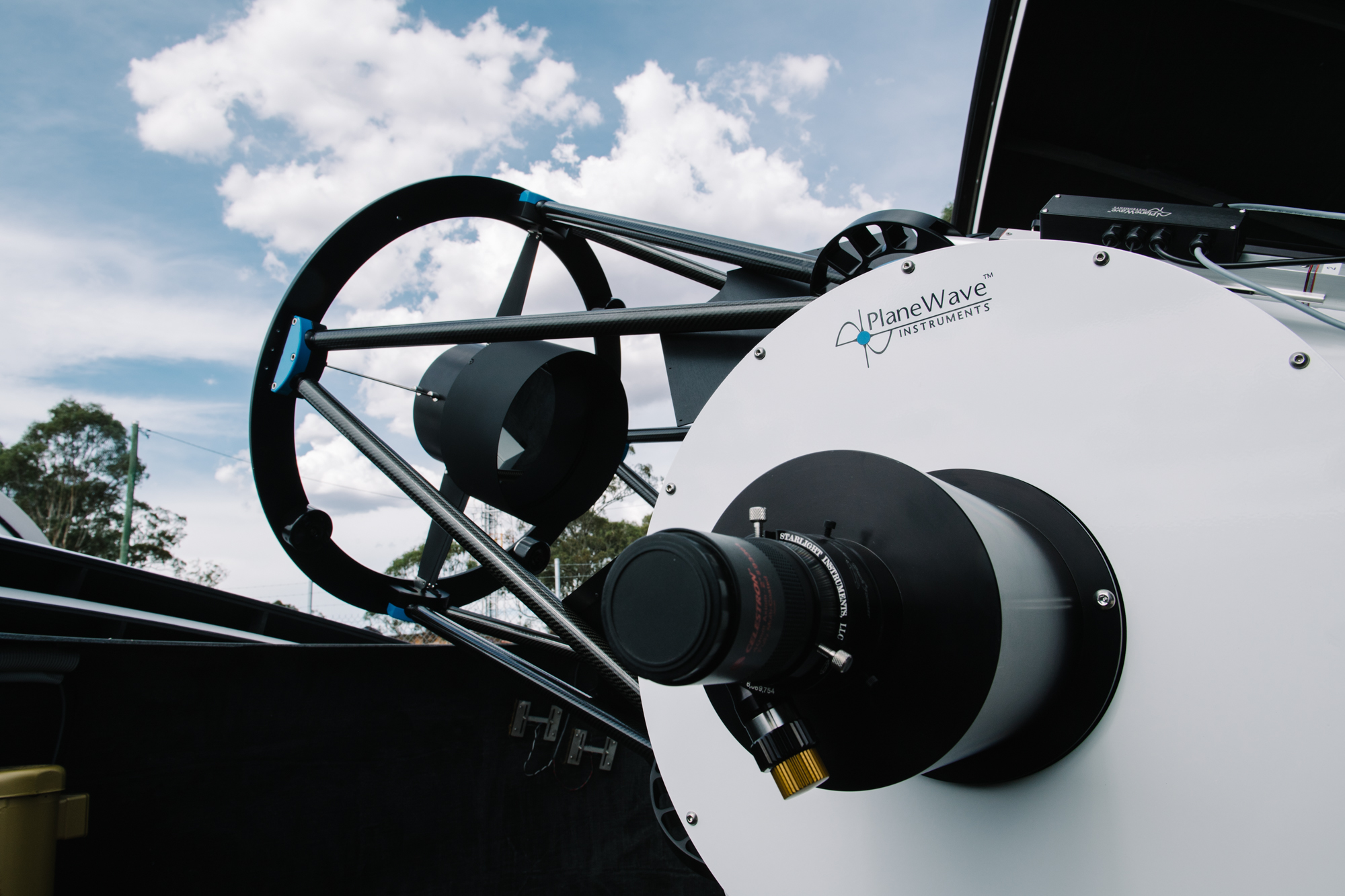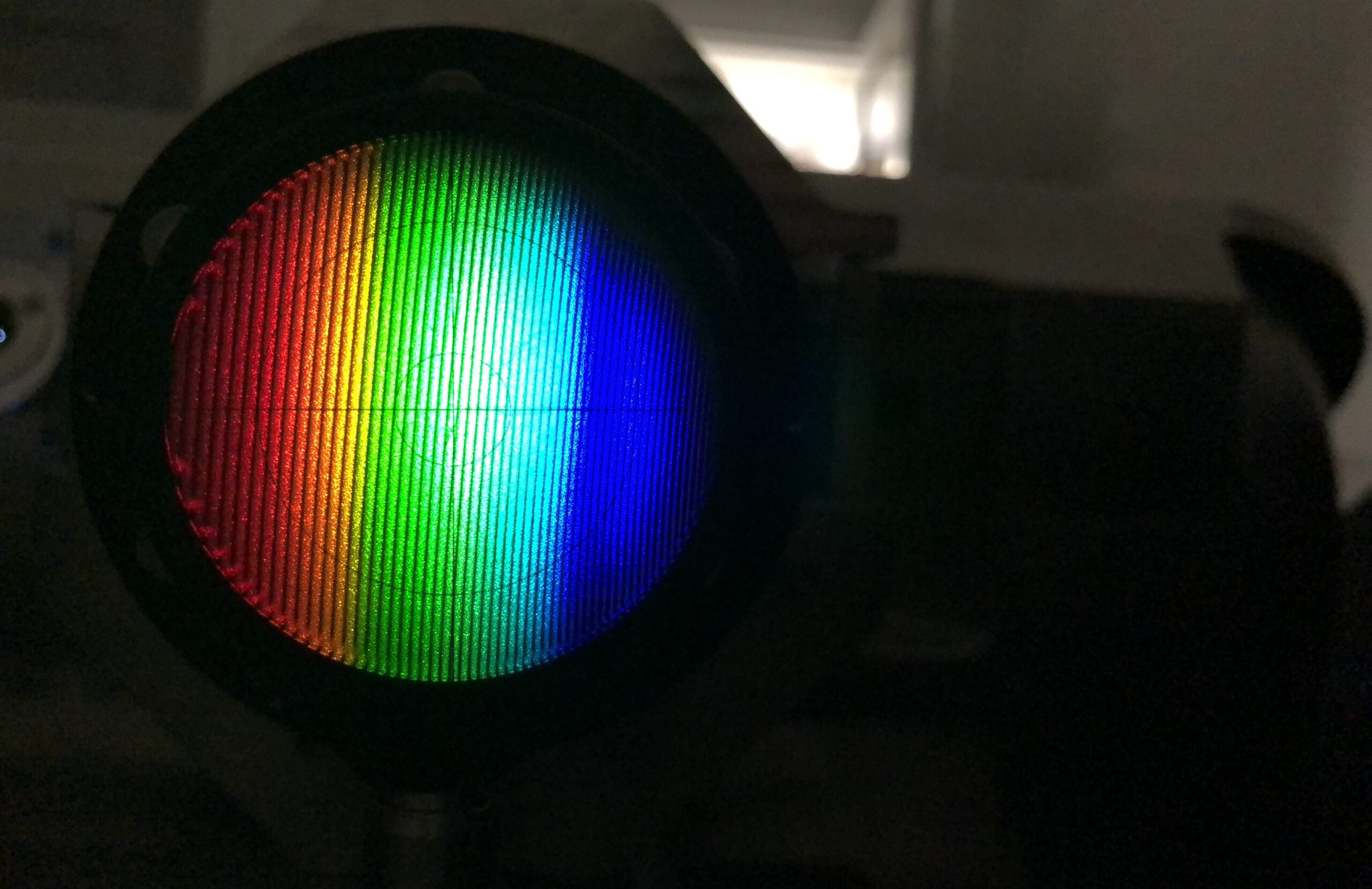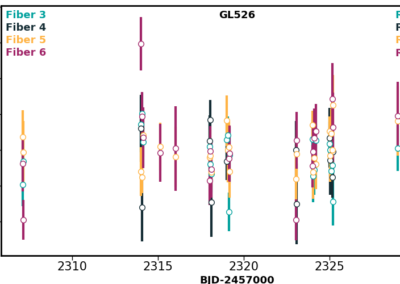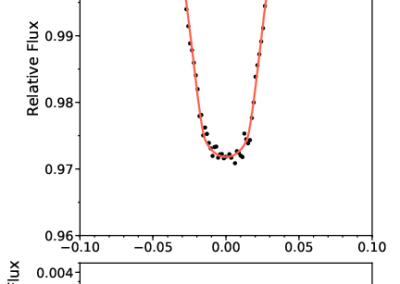MINERVA - Australis
The MINERVA-Australis facility is located at UniSQ’s Mt Kent Observatory, a ~30 min drive south of Toowoomba. It is made up of four Planewave CDK700 0.7 m telescopes. Each telescope can feed light via a 20 m fibre to the high-resolution spectrograph (R > 80,000) which covers the wavelengths 480 – 630 nm with small gaps between consecutive orders. The telescopes can also be used for photometry with Sloan griz photometric filters available.
If you would like to discuss possible research collaboration or to ask how to get time on the telescopes then please reach out to Rob Wittenmyer or Duncan Wright. MINERVA-Australis also has some of its time available for US-based astronomers – see below for more details.

History
The facility was built in 2018 and funded by the Australian Research Council via a LIEF grant and from contributions from several collaborating institutions: University of New South Wales, Nanjing University, UC Riverside, George Mason University, Massachusetts Institute of Technology, University of Louisville, University of Texas at Austin and University of Florida
Photo: MINERVA-Australis telescopes on Mt Kent by UniSQ Photography

Telescopes
MINERVA-Australis currently consists of four PlaneWave CDK700 telescopes (five CDK700’s were available for the period July 2019 – April 2020, while a donated CDK700 telescope was waiting for another project to start). These 0.7 m telescopes have two ports, allowing each to be used for either spectroscopic or photometric observations. Each telescope sits in its own automated clam-shell Astrohaven dome, distributed in an approximate semi-circle around the main observatory building.
Photo: MINERVA-Australis telescope on Mt Kent by UniSQ Photography

Spectroscopy
The four active telescopes are connected by optical fibre to a stabilised, R = 75,000 echelle spectrograph, covering the wavelengths 480 – 630nm, designed by KiwiStar Optics. The spectrograph uses simultaneous calibration in two separate calibration fibres. Because of the spectrographs wavelength range and the very low scattered light, the simultaneous calibration source is now supplied by a Tungsten slit-flat lamp backlighting an iodine cell. This is a different approach to the typical ‘iodine cell’ method that passes the starlight through an iodine cell. The spectrograph has 29 orders imaged on a 2k x 2k Spectral Instruments SI850 detector cooled to -90 C with 13.5 micron pixels sampling the spectrum at 3 pixels per resolution element (3 pix/fwhm).
Photo: A white light test spectrum projected onto a frosted alignment disk taken during installation by Duncan Wright

Photometry
The CDK700 telescopes are also capable of precision photometry on their other nasmyth port. We currently have one photometric setup capable of sloan griz colour photometry using a QHY600M SCMOS detector.
Photo: The Eagle Nebula (M16) in false colour taken at Mt Kent Observatory with MINERVA T1 on 04 August 2018 by Daniel Johns. The Eagle nebula is composed of 15x100s exposures in g’, i’, and r’ Sloan filters.
The Capabilities of MINERVA-Australis
Below are some figures illustrating the performance of MINERVA-Australis
Gl526
This is an example of the precision obtained on each telescope (labelled as fibres in the plot) over a few weeks for Gl526, a V=8.5 quite stable M Dwarf star.
Tau Ceti
This is a plot of the spectral match to tau Ceti using MINERVA Automated pipeline analysis provided by George Zhou. This analysis includes basic stellar parameter measurements, rotation (Vsin(i)) estimate, and produces least-square deconvolution (LSD) profiles for RV analysis.
Tau Ceti
This is an example of the precision obtained on each telescope (labelled as fibres in the plot) over a few weeks for tau Ceti, a V=3.5 RV stable G Dwarf star.
Photometric Transit
Here is an example transit observation of WASP-43, a V = 12.4 mag K7V star, taken with the QHY600M camera and no filter.
Applying for Time
MINERVA-Australis has some of its time available for US-based astronomers to pursue exoplanetary science through the NN-EXPLORE program.
More information about applying for time through these programs is available here.
Accessing the Data
Datasets from MINERVA-Australis are curated through the mdVine online catalog browser software, which has been developed by the UniSQ Astrophysics group. If you are interested in accessing our datasets, you can learn more here.





